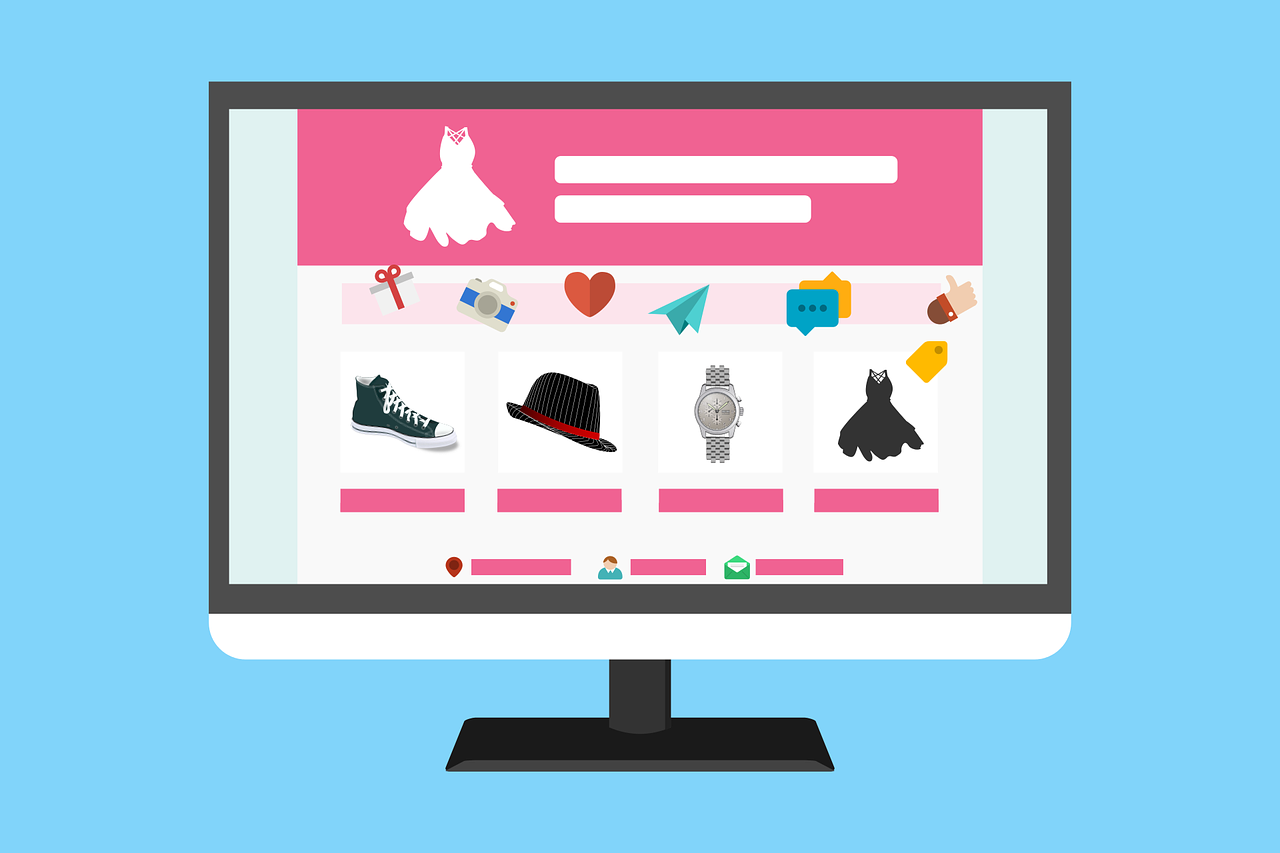It is undeniable that the pandemic did change the way we purchase goods starting from the gloomy days of being stuck at home and even moving forward. Online shopping has now become a way of life, with more shoppers not willing to trade away the comfort and convenience it brings. They are not looking back.
While most of us can now start running our own e-commerce business with some stocks and a lot of social media, online marketplaces and selling platforms like Amazon still provide the best avenue if you are looking for a wider market and more growth opportunities.
Why Amazon?
Amazon experienced tremendous growth ever since its establishment. And actually, it revolutionized the way people shop not just in the US but all over the world.
To date, Amazon owns about 40 brands and subsidiaries, an acquisition, a wide range of products and services for cloud computing, streaming, and marketing, and of course, a selling platform that caters to about 300 million users across 100 countries.
Extracting the juice from these statistics:
Tremendous traffic
Imagine your business being in the middle of shoppers with swipe-ready credit and debit cards looking for the right product to buy.
Complete and proven system
Amazon offers a complete business solution for selling, advertising, logistics, shipping, payment, and management. You can get your business up and running in significantly less time than building a brick-and-mortar store.
Flexibility
You can still keep your job and run your business after work hours and from your computer.
Credibility
About 89% of US buyers prefer to buy from Amazon than other platforms. Establishing your business in a platform trusted by shoppers can immediately improve your business’ value and customer trust rating.
As with any business venture, you should first come up with a plan. Setting up your business on Amazon may tick off most of the items you need, but you should still take your time studying your product, fine-tuning your idea, gauging your competition, and continuously innovating.
If you think you and your product are ready, here’s your ultimate guide to starting and growing your e-commerce business on Amazon.
What are the Steps to Take to Start Selling on Amazon?
Given the scale of the platform, Amazon may tend to be intimidating for some startup sellers. But in reality, it offers one of the most user-friendly seller interfaces there is. With some computer know-how, you will be on top of the game in no time.
Let’s say you already have that product you intend to sell, make sure to understand which category it best fits. Be as specific as you can.
Some products may be under overlapping categories, so you have to choose only one. You can still expand your market in the long run by working with keywords and product listing optimization.
I am emphasizing this since the Amazon algorithm may work differently across various categories. If you do not identify your product with the right category, chances are, it might not be visible to your target customers.
Step 1: Create a seller account.
Get your bank account ready and all the pertinent seller information on hand and sign up for an Amazon seller account.
Step 2: Make a product listing.
Get all those forms filled out about your product. Make sure to maximize the information so your customers can understand your product and the value it offers to them.
Step 3: Send your inventory to Amazon.
Make sure you send enough inventory to Amazon to fulfill your orders. Your items getting out of stock may affect the algorithm technicalities or in essence, your visibility and credibility as a seller.
Step 4: Apply marketing and advertising strategies.
Good grief! Amazon provides you with several ways to promote your products on Amazon and even beyond. Marketing can help you leverage your business with your competition or at least, make it visible to your target market. I advise running paid ads to boost your presence. It is also important to apply SEO practices to create a strong foundation for your business in the algorithm.
How Can I Choose the Right Products to Sell on Amazon?
You can literally sell almost anything on Amazon as long as you can put it in a box.
But to make the most out of the opportunity, you should consider several elements that center around demand and profitability.
Spot for Hot and Trending Items
You can also research niched items that are hot and trending right now. Sometimes, it is an advantage to ride the waves even its momentary to gain traction in your newly opened shop. You can then add products to your store to expand your inventory.
Check Amazon’s Best Lists
The Amazon platform itself provides you with a wealth of information about what sells. Check the best seller’s list in each category, new hot releases, and the movers and shakers list.
Shipping and Practicality Considerations
In general, consider items that can handle shipping stress, reasonably sized to fit boxes that are easy to handle, and practical for daily use. It takes research and market study, but, it is worth pouring time into.
Improve Existing Products
Widen your perspective from on-demand items to on-demand items with lower competition. You will have a better chance to sell side-by-side in this situation. Check for on-demand items with a lower number of reviews.
Once you have a product you are eyeing to sell, check your competition and see what you can improve on their listings or on the product itself. You can improve existing features or add more. You can also try giving it a new spin for a newer market or bundle it with complementing items for a complete experience.
What are the Best Ways to Source Products for my Amazon Business?

However, not all can enjoy the same level of profitability and growth opportunities in the platform because there are still matters that lie in your own hands.
The challenge when it comes to high-traffic marketplaces like Amazon is competition. Tighter competition more often brings the costs down, lowering your profits.
Remember that Amazon also charges FBA fees that cover shipping, inventory management, storage, and returns. So add that to your overhead.
As a business owner, it is your responsibility to lower your capital cost and maximize your profits by looking for the best suppliers.
It is also a must to source your raw materials or products from reputable suppliers to guarantee quality. Reputation and consistency are just some differentiating factors you can work on to gain more loyal customers, so make sure you ace those in terms of providing the best value.
Selecting Your Business Model
Do you intend to start your own brand out of products from a supplier? Will you be sourcing discounted items and reselling them? Are you selling bulk items? Are you a brick-and-mortar shop extending your market? There are tons of routes you can take while you are on Amazon depending on your product and business model.
Here are the most common ways to procure the products for your Amazon business:
Private labeling
This involves finding a supplier for ready-made goods where you can put your brand on and re-sell.
Wholesaling
Offering bulk items to retailers. Less work and effort on ads and marketing.
Real arbitrage
Scouting for the best deals like discounted items from outlet shops and off-season sales and then re-selling them on Amazon.
Direct to supplier
Similar to wholesaling, you get your products in bulk direct from manufacturers or suppliers, or other online marketplaces like Alibaba. And then you retail them on Amazon.
Drop shipping
One of the current selling trends wherein you partner with a supplier who will take care of the product inventory while you do the listing and selling on Amazon.
How Can I Create a Winning Amazon Business Strategy?
You gain tons of advantages in choosing Amazon as part of your overall business plan. You gain tremendous exposure, expand your reach, widen your market, and grow your business alongside the many innovations in sales and marketing it continuously develops.
However, just selling on Amazon does not guarantee instant success. It takes the right business strategy to harness the opportunities the platform can bring you.
Here are some winning tips you can do in crafting that successful Amazon business strategy for your business:
Research
Make sure there is a demand for your product before venturing. Research the product and see in which areas you can differentiate yours from the competition. Check how your competitors are doing and see if there are gaps you can fill in.
Do the math
Ensure your profitability by listing all your expenses and adding the necessary overhead to cover those while leaving you with decent profits. Stay on the competitive pricing level within the platform to stay in tune with the algorithm requirements.
Innovate
Competition brings innovation. As an entrepreneur, make sure to keep your creative juices alive and flowing. Innovation not only adds value to your customers but also leverages you in the competition.
Do branding
Branding helps establish identity and create a lifestyle around the products you offer. It also helps improve the whole experience, elevating your products and encouraging loyal customers. Your success with one product can easily flow to the rest in your inventory, potentially replicating the same.
Optimize your listing
Many overlook their listing while disregarding the power of compelling copywriting. And while you are busy with numbers, you also need to work on search engine optimization.
SEO can help the algorithm on understanding your product and connecting you to your potential customers. It does so with the help of keyword research and making sure these keywords appear in your product listing.
You should also put the effort into uploading high-quality images that can help the shoppers imagine your product without seeing or holding it in person. Include lifestyle images that depict how your products can be used – make sure to evoke positive emotions by including people smiling or having fun.
And lastly, remember that your product listing is made for human shoppers. Therefore, add creative writing or copywriting to boost conversion. Resonate with their pain points and present your product as the solution.
Respond to customers
Make timely responses to customer questions and inquiries. Take note of their feedback and apply constructive criticisms to improve your product and service. Make customer satisfaction your utmost priority.
Stay updated with Amazon’s policies and algorithm
The online space is ever-changing, running around trends that can change in a minute or two. Make sure to stay on top of these changes and adjust your strategies as necessary to avoid losing the positive results of your hard work.
Do not resort to strategies that are against Amazon policies. It may backfire, causing your listing to be down or even your account suspended.
Maximize Amazon’s marketing services
Given the competitive nature of the platform, I strongly advise that you run ads and maximize Amazon’s own marketing services. Use sponsored brands, sponsored displays, and sponsored products to increase your visibility and get traffic to your listing and convert them into sales accordingly.
The key to a winning business strategy is continuously learning, innovating, and re-calibrating to keep up with your customer’s needs and the marketplace’s changing landscape.
How Can I Use Data and Analytics to Improve My Performance on Amazon?

The best thing about selling in the online space is the ease of tracking and monitoring the performance of your business. Data and analytics can help you with these.
There are tons of tools that can help you gather data, analyze it, and turn them into actionable insights faster than traditional businesses do.
And that you can use to improve your product and get a competitive advantage.
Here are more ways that analytics and data can improve your chance of success at Amazon:
Monitoring your key performance metrics (KPIs)
Having this kind of perspective in your business can help you understand how your product is performing in terms of sales and conversion rates. Data analytics tools have dashboards that give you an overview of your metrics in real time.
Analyzing your competition
You can also derive the data from your competitors and compare it against yours. From there, you can spot areas you can improve, or get insights about their market success. You can also see gaps that you can fill in.
Optimizing your product listing
Keyword research tools can help you calibrate your SEO strategies and fine-tune your listings accordingly. Apply keywords that may be highly likely to convert to sales and help you rise the rankings and improve your visibility.
Understanding your customers
Data analytics can make you gain visibility and dig deeper into their search and purchase behavior in the platform. It can help you fine-tune your advertising strategies, improve customer satisfaction, and improve your product.
Parting Thoughts
Amazon provides a lot of growth opportunities for businesses of any scale. But with any business, you have to educate yourself first and learn continuously along the way.
Here at Signalytics, we can help you at any point in your Amazon business. We offer a wide range of services that lend our advertising and marketing expertise and experience to help you overcome your challenges or sustain your growth.


